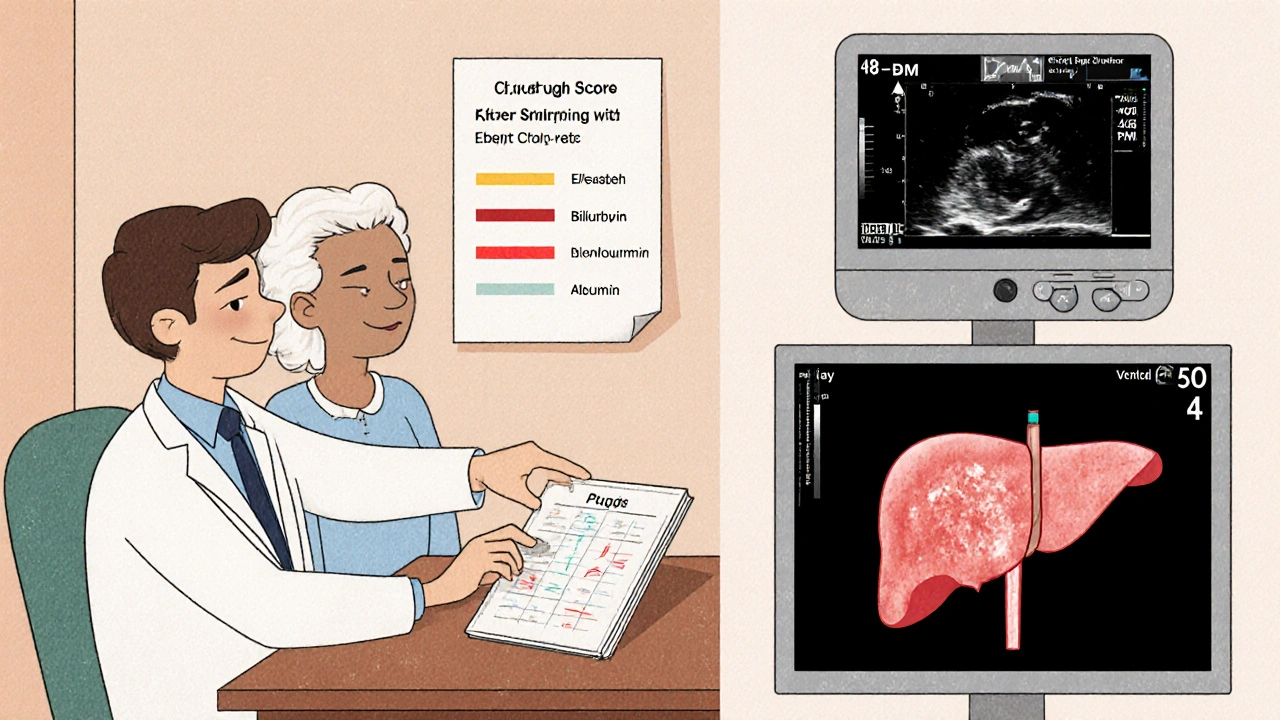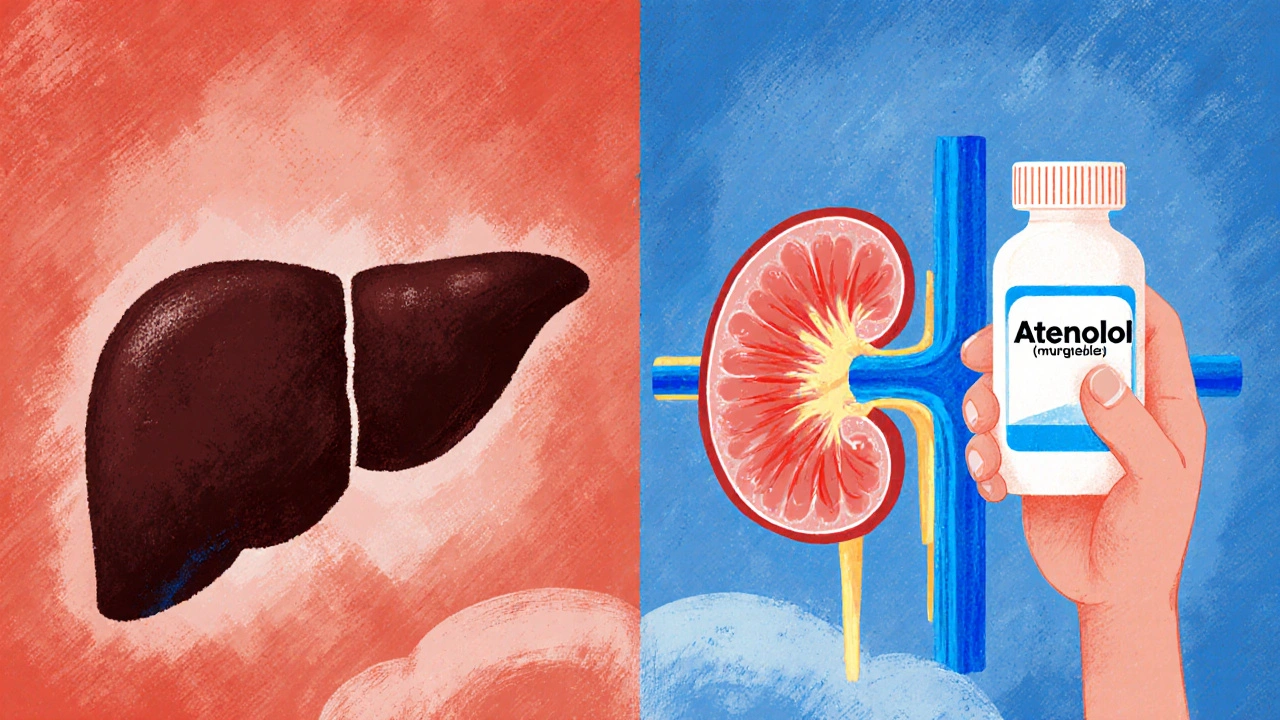Nebivolol and Liver Function: What Patients with Liver Disease Should Know

If you have liver disease and your doctor prescribed nebivolol, you’re not alone. Many people with conditions like cirrhosis, fatty liver, or hepatitis rely on this beta blocker to manage high blood pressure or heart failure. But here’s the thing: your liver doesn’t work the same way it used to. That changes how your body handles nebivolol-and it could mean the difference between safe relief and serious side effects.
How Nebivolol Is Processed in the Body
Nebivolol is a third-generation beta blocker, designed to lower blood pressure by slowing your heart rate and relaxing blood vessels. Unlike older beta blockers like propranolol, nebivolol has a unique effect on nitric oxide, which helps improve blood flow. But its biggest advantage-and its biggest risk for people with liver issues-is how it’s broken down.
Over 90% of nebivolol is metabolized by the liver, mainly through the CYP2D6 enzyme system. That means if your liver is damaged, it can’t process the drug efficiently. Instead of being cleared out, nebivolol builds up in your bloodstream. Higher levels mean stronger effects: slower heart rate, lower blood pressure, dizziness, fatigue, or even fainting.
Studies from the Journal of Clinical Pharmacology show that people with moderate to severe liver impairment have up to three times higher nebivolol concentrations than those with healthy livers. That’s not a small difference-it’s a red flag.
What Counts as Liver Disease?
Liver disease isn’t one condition. It’s a spectrum. If you’ve been told you have:
- Cirrhosis (scarring of the liver)
- Non-alcoholic fatty liver disease (NAFLD) or NASH
- Alcoholic liver disease
- Chronic hepatitis B or C
- Autoimmune hepatitis
- Liver enzyme levels (ALT, AST) that are consistently high
Then your liver’s ability to process drugs is already compromised. Even if you feel fine, your liver might be working at 50% capacity or less. That’s why you can’t assume nebivolol is safe just because your blood pressure is high or your heart is racing.
Dosing Adjustments for Liver Impairment
Manufacturers and clinical guidelines agree: start low, go slow.
The standard starting dose of nebivolol is 5 mg once daily. But if you have mild liver impairment, your doctor should consider starting at 2.5 mg. For moderate impairment, 2.5 mg every other day may be safer. In severe cases-like decompensated cirrhosis-nebivolol is often avoided entirely.
Why not just take half a pill? Because it’s not just about the dose. It’s about how your body absorbs, processes, and eliminates the drug over time. In liver disease, the half-life of nebivolol can stretch from 10 hours to over 30 hours. That means the drug lingers. One daily dose might feel like two or three.
Never adjust your dose yourself. A blood test called Child-Pugh score helps doctors assess liver function. It looks at bilirubin, albumin, INR, ascites, and mental status. Based on that score, your provider can decide if nebivolol is even an option.
Signs Nebivolol Is Too Much for Your Liver
Watch for these symptoms-they’re not just "feeling tired." They’re your body telling you it’s overwhelmed:
- Dizziness or lightheadedness when standing up
- Unusual fatigue that doesn’t improve with rest
- Swelling in your legs or belly that gets worse
- Heart rate below 50 beats per minute (check with a smartwatch or manual pulse)
- Confusion or difficulty concentrating
- Yellowing of skin or eyes (jaundice)
If you notice any of these, call your doctor. Don’t wait. High nebivolol levels can worsen liver function by reducing blood flow to the organ. It’s a dangerous loop: poor liver → more drug buildup → less liver blood flow → worse liver damage.

Alternatives to Nebivolol for Liver Patients
Not all beta blockers are equal when it comes to liver processing. Some are safer because they’re cleared by the kidneys instead.
Atenolol is one of the top alternatives. About 85% of it leaves the body through urine. That makes it a better choice for people with liver disease, as long as their kidneys are okay.
Metoprolol succinate is another option, but it’s still partly metabolized by the liver. Dose reductions are needed, and monitoring is required.
Carvedilol is sometimes used in cirrhosis for portal hypertension, but it’s tricky. It’s heavily liver-metabolized and can cause low blood pressure. Only used under close supervision.
Some patients do better with non-beta blocker options like amlodipine (a calcium channel blocker) or lisinopril (an ACE inhibitor). These don’t rely on the liver to break down and are often preferred for liver patients with hypertension.
What to Ask Your Doctor
Don’t leave your safety to guesswork. Bring these questions to your next appointment:
- Is my liver function stable enough for nebivolol?
- Can we check my Child-Pugh score or recent liver enzymes?
- Is there a safer alternative based on my kidney function and other meds?
- How often should I get blood tests to monitor drug levels and liver health?
- What symptoms should I call you about immediately?
Doctors aren’t mind readers. If you don’t mention your liver condition, they may assume it’s mild-or forget to adjust your dose. Be specific. Say: "I have cirrhosis," not just "I have liver issues."
Drug Interactions to Avoid
Nebivolol can interact with other meds that also stress the liver or slow heart rate:
- Verapamil or diltiazem (calcium channel blockers) → can cause dangerously slow heart rate
- Fluoxetine or paroxetine (SSRIs) → block CYP2D6, making nebivolol build up faster
- Alcohol → increases dizziness and lowers blood pressure further
- NSAIDs like ibuprofen → can reduce kidney function, which may worsen fluid retention in liver disease
Always tell your pharmacist you have liver disease before picking up any new prescription or over-the-counter medicine. Even herbal supplements like milk thistle or kava can interfere.

Monitoring Your Health
If you’re on nebivolol and have liver disease, regular check-ups aren’t optional. Here’s what you need:
- Every 3 months: Liver function tests (ALT, AST, bilirubin, albumin)
- Every 6 months: Kidney function (creatinine, eGFR)
- Monthly: Blood pressure and heart rate at home (keep a log)
- Annual: Ultrasound or FibroScan to track liver scarring
Keep a simple notebook or use your phone to track symptoms: "Day 5: dizzy after standing, HR 48, no swelling." That data helps your doctor decide if your dose needs changing.
When Nebivolol Might Be Too Risky
Some patients should avoid nebivolol entirely:
- Decompensated cirrhosis (ascites, encephalopathy, variceal bleeding)
- Severe bradycardia (heart rate under 50 without a pacemaker)
- Heart block (second or third degree)
- Severe asthma or COPD (beta blockers can trigger bronchospasm)
- Recent heart failure hospitalization with low blood pressure
In these cases, alternatives like amlodipine, hydralazine, or diuretics are often safer. The goal isn’t to treat blood pressure at all costs-it’s to protect your liver while keeping your heart stable.
Final Thought: Your Liver Is Part of the Treatment Plan
Medications don’t exist in a vacuum. Nebivolol works for your heart, but it lives in your liver. If your liver is sick, your meds need to adapt. Many patients feel guilty asking for changes-but your body isn’t failing you. It’s asking for help.
There’s no shame in switching to a safer drug. There’s no shame in needing a lower dose. What’s dangerous is staying on a medication that doesn’t fit your body anymore.
Work with your doctor. Track your numbers. Speak up when something feels off. Your liver can’t tell you it’s tired-but you can.
Can nebivolol cause liver damage?
Nebivolol itself doesn’t directly damage liver cells. But if your liver can’t process it properly, the drug builds up and reduces blood flow to the liver. This can worsen existing liver disease, especially in advanced cirrhosis. It’s not toxicity-it’s reduced oxygen and nutrient delivery due to low blood pressure and slowed circulation.
Is nebivolol safe for people with fatty liver?
For mild non-alcoholic fatty liver disease (NAFLD), nebivolol is often tolerated at low doses, especially if liver enzymes are only slightly elevated. But if you have NASH with inflammation or fibrosis, your doctor should proceed with caution. Regular monitoring of liver enzymes and blood pressure is essential. Atenolol is often preferred in these cases.
How long does nebivolol stay in your system with liver disease?
In healthy people, nebivolol has a half-life of about 10-12 hours. With moderate liver impairment, it can extend to 20-30 hours. In severe cases, it may linger for over 40 hours. That’s why once-daily dosing can become dangerous-it’s like taking two doses in one.
Can I take nebivolol if I have hepatitis C?
Yes, but only if your liver function is stable. If you’re on antiviral treatment and your enzymes are normal, nebivolol may be used cautiously. But if you have advanced fibrosis or cirrhosis, your doctor will likely switch you to a kidney-cleared beta blocker like atenolol. Always inform your hepatologist about all your medications.
What should I do if I miss a dose of nebivolol?
If you miss a dose, take it as soon as you remember-unless it’s close to your next scheduled dose. Never double up. With liver disease, your body clears the drug slowly, so skipping a dose won’t cause a sudden spike in blood pressure. But missing doses regularly can make your condition harder to control. Talk to your doctor if you’re having trouble remembering.
Are there any foods I should avoid with nebivolol and liver disease?
No specific foods directly interfere with nebivolol. But if you have liver disease, you should avoid alcohol entirely, limit sodium to reduce fluid retention, and avoid raw shellfish (risk of infection). Also, grapefruit juice can affect some liver enzymes, though its interaction with nebivolol is minor. Still, it’s safest to avoid it if you’re on multiple medications.
If you’re managing both heart disease and liver disease, you’re walking a tightrope. Nebivolol can help-but only if your liver is taken into account. The right dose, the right monitoring, and the right alternatives make all the difference. Don’t settle for a one-size-fits-all approach. Your body isn’t average-and your treatment shouldn’t be either.